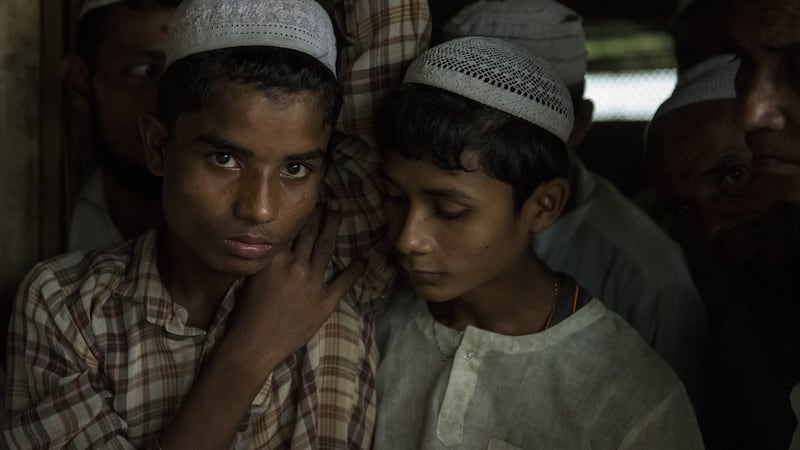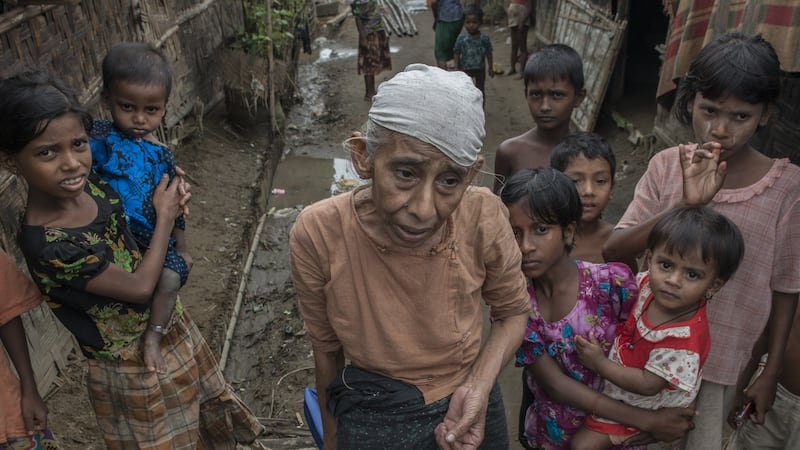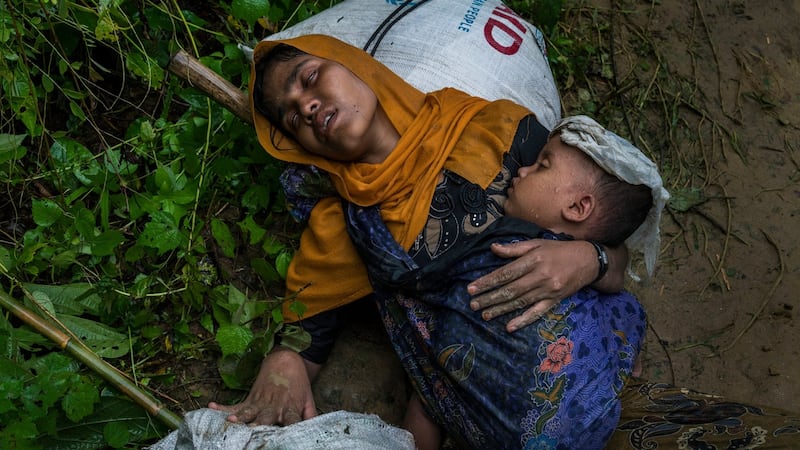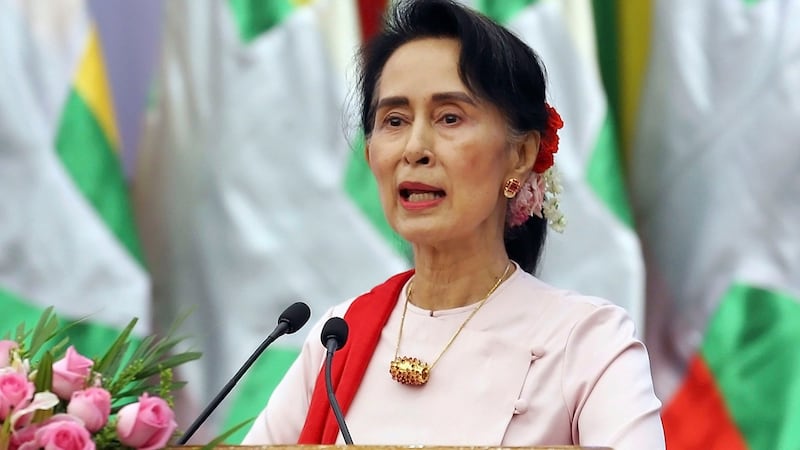A military crackdown against the Rohingya ethnic group has driven hundreds of thousands of men, women and children from their homes in Myanmar. The Rohingya have faced violence and discrimination in the majority-Buddhist country for decades, but are now fleeing in unprecedented numbers, from violence that the United Nations human rights chief, Zeid Ra'ad al-Hussein, has called "a textbook example of ethnic cleansing".
Here’s how an old and bitter dispute has managed to become even more charged.
Who are the Rohingya?
The Rohingya are a Muslim ethnic group that practices a form of Sunni Islam and have lived in Rakhine, one of Myanmar’s poorest states, for generations. Before the latest exodus, an estimated one million Rohingya lived there, but even then they were a minority in the state. The group has its own language and cultural practices.

Some trace their origins there to the 15th century, an assertion the government disputes. Their name itself refers to the area they claim as home, according to the Council on Foreign AffairsRelations, an independent think tank: Rohang derives from the word "Arakan", (the former name of Rakhine state) in the Rohingya dialect and ga or gya means "from".
Myanmar (formerly Burma) doesn't recognise Rohingya as citizens, and sees them instead as immigrants from Bangladesh who came to Rakhine under British rule. The country's first census in 30 years, carried out in 2014, didn't count the Rohingya; those who identify as part of the group were told to register as Bengali and indicate that their origins were in Bangladesh. The government's stance makes them one of the largest stateless groups in the world.
Many live in squalid conditions similar to refugee camps. Violence against the Rohingya in Rakhine is part of a “longstanding pattern of violations and abuses; systematic and systemic discrimination; and policies of exclusion and marginalisation” that have persisted for decades, according to the United Nations human rights agency.
Myanmar has passed discriminatory laws
Since a 1962 coup in Myanmar, the country’s successive governments have significantly limited the rights of the Rohingya. A law passed in 1982 denied them citizenship, leaving them off a list of 135 ethnic groups formally recognised by the government. This limited the Rohingyas’ access to schools and health care and their ability to move in and out of the country. The government in Rakhine at times has also enforced a two-child limit on Rohingya families and has restricted interfaith marriage.
Waves of violence have been occurring for years
Tensions in Rakhine have often erupted into violence, prompting hundreds of thousands to seek refuge in Bangladesh and Pakistan in different waves over the decades.
In May 2012, the rape and murder of a Buddhist prompted a series of revenge attacks against Muslims. The violence quickly intensified. The military began a wide-ranging crackdown and hundreds of thousands fled. In October 2013, thousands of Buddhist men carried out co-ordinated attacks on Muslim villages throughout Rakhine.

Human rights groups say the violence that erupted in 2012 and continued into 2013 amounted to ethnic cleansing and crimes against humanity. A 2013 Human Rights Watch report said violence in Rakhine was a “co-ordinated campaign to forcibly relocate or remove the state’s Muslims”. The response from world leaders, however, has been limited.
Last October, an armed Rohingya insurgency came to light when militants from the Arakan Rohingya Salvation Army, then known as Harakah al-Yaqin, attacked three border guard posts. Over the four months that followed, Myanmar's army, known as the Tatmadaw, and the police killed hundreds, gang-raped women and girls, and forced as many as 90,000 Rohingya from their homes.
How did the latest bloodshed begin?
On August 25th, the Arakan Rohingya Salvation Army attacked again, targeting police posts and an army base. Security forces cracked down on the wider population, and rights groups accused them of killing, raping, burning villages and shooting civilians from helicopters. The exodus into Bangladesh began: More than 370,000 Rohingya fled.

An additional 12,000 people, mainly ethnic Rakhine Buddhists and other non-Muslims, are also displaced within the state, according to Human Rights Watch. Myanmar has halted humanitarian aid to Rakhine, leaving those still in the state with limited access to food and water.
Myanmar has framed the actions as a necessary counterinsurgency operation.
What has Aung San Suu Kyi done about it?
Governments from several predominantly Muslim countries, including Indonesia, Malaysia, Pakistan and Turkey, have expressed concern about the most recent violence. Malala Yousafzai of Pakistan and Bishop Desmond Tutu of South Africa have both called on their fellow Nobel Peace Prize laureate, Aung San Suu Kyi, Myanmar's de factor leader, to do something about the bloodshed.

Suu Kyi, who leads Myanmar's civilian government but does not control the military, has largely avoided public statements about the crackdown and the flight of refugees. But during a phone call last week with Turkey's president, Recep Tayyip Erdogan, she complained of "a huge iceberg of misinformation calculated to create a lot of problems between different communities and with the aim of promoting the interest of the terrorists", according to her office. (On Wednesday, her office said she had cancelled a planned visit to the UN General Assembly.)
Analysts have said it would be politically difficult for Suu Kyi to denounce the crackdown, given the military’s political power and the unpopularity of the Rohingya among the country’s Buddhists. Her critics say she has a moral obligation to speak out, and some have called for her Nobel to be withdrawn.
New York Times
















